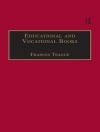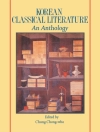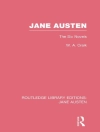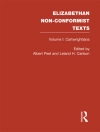The love songs of Occitan troubadours inspired a rich body of courtly lyric by poets working in neighboring languages. For Sarah Kay, these poets were nightingales, composing verse that is recognizable yet original. But troubadour poetry also circulated across Europe in a form that is less well known but was more transformative. Writers outside Occitania quoted troubadour songs word for word in their original language, then commented upon these excerpts as linguistic or poetic examples, as guides to conduct, and even as sources of theological insight. If troubadours and their poetic imitators were nightingales, these quotation artists were parrots, and their practices of excerption and repetition brought about changes in poetic subjectivity that would deeply affect the European canon.
The first sustained study of the medieval tradition of troubadour quotation, Parrots and Nightingales examines texts produced along the arc of the northern Mediterranean—from Catalonia through southern France to northern Italy—through the thirteenth century and the first half of the fourteenth. Featuring extensive appendices of over a thousand troubadour passages that have been quoted or anthologized, Parrots and Nightingales traces how quotations influenced the works of grammarians, short story writers, biographers, encyclopedists, and not least, other poets including Dante and Petrarch. Kay explores the instability and fluidity of medieval textuality, revealing how the art of quotation affected the transmission of knowledge and transformed perceptions of desire from the ‘courtly love’ of the Middle Ages to the more learned formulations that emerged in the Renaissance. Parrots and Nightingales deftly restores the medieval tradition of lyric quotation to visibility, persuasively arguing for its originality and influence as a literary strategy.
Inhoudsopgave
Note on References, Translations, and Abbreviations
Introduction: Quotation, Knowledge, Change
PART I. PIONEERING TROUBADOUR QUOTATION
Chapter 1. Rhyme and Reason: Quotation in Raimon Vidal de Besalú’s Razos de trobar and the Grammars of the Vidal Tradition
Chapter 2. Quotation, Memory, and Connoisseurship in the Novas of Raimon Vidal de Besalú
Chapter 3. Starting Afresh with Quotation in the Vidas and Razos
Chapter 4. Soliciting Quotation in Florilegia: Attribution, Authority, and Freedom
PART II. PARROTS AND NIGHTINGALES
Chapter 5. The Nightingales’ Way: Poetry as French Song in Jean Renart’s Guillaume de Dole
Chapter 6. The Parrots’ Way: The Novas del papagai from Catalonia to Italy
PART III. TRANSFORMING TROUBADOUR QUOTATION
Chapter 7. Songs Within Songs: Subjectivity and Performance in Bertolome Zorzi (74.9) and Jofre de Foixà (304.1)
Chapter 8. Perilous Quotations: Language, Desire, and Knowledge in Matfre Ermengau’s Breviari d’amor
Chapter 9. Dante’s Ex-Appropriation of the Troubadours in De vulgari eloquentia and the Divina commedia
Chapter 10. The Leys d’amors: Phasing Out the antics troubadors and Ushering in the New Toulousain Poetics
Chapter 11. Petrarch’s ‘Lasso me’: Changing the Subject
Conclusion
Appendices
Notes
Bibliography of Printed and Electronic Sources
Index
Acknowledgments
Over de auteur
Sarah Kay is Professor of French at New York University and author of several books, including The Place of Thought: The Complexity of One in Late Medieval French Didactic Poetry, also available from the University of Pennsylvania Press.












